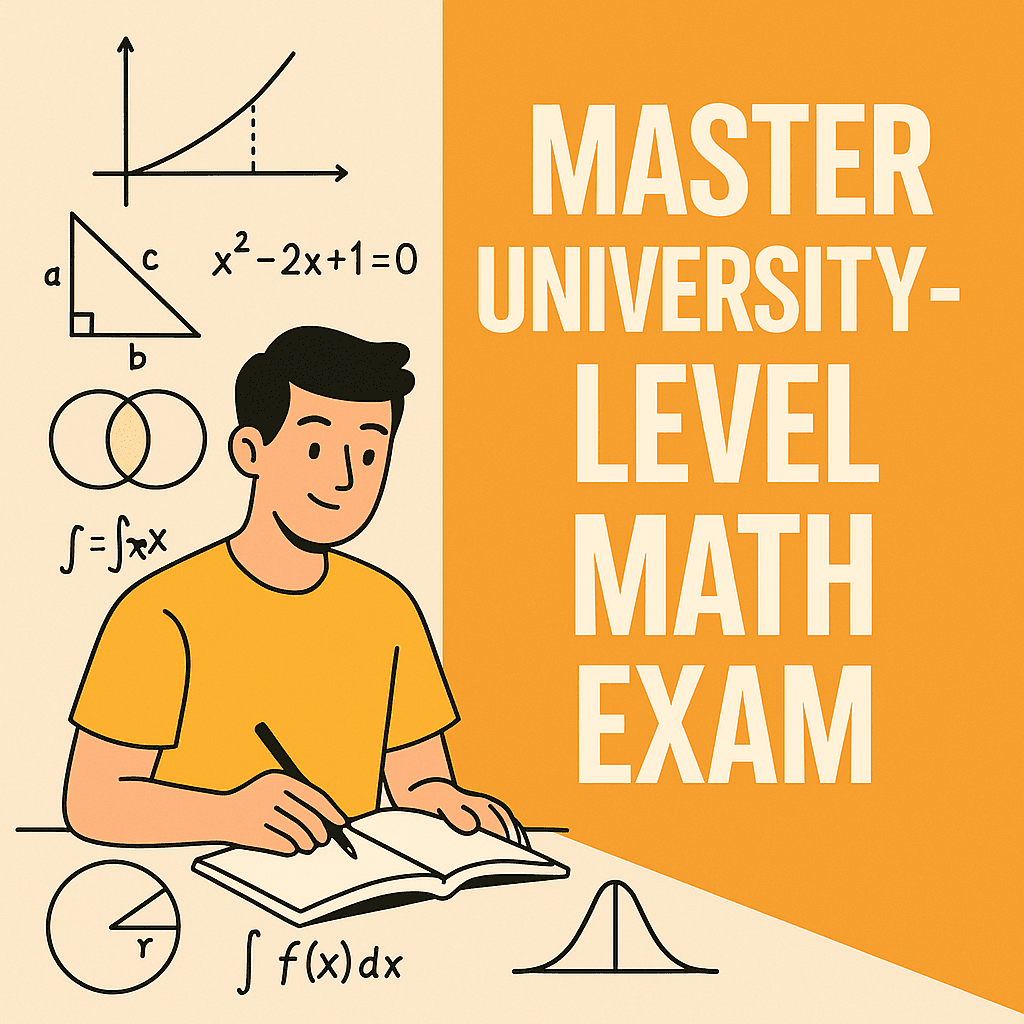Math University Guide
Concept-focused guide for Math Mock Exam - 1.
~7 min read

Overview
Welcome to this comprehensive walkthrough for mastering the concepts behind a university-level math mock exam! In this session, we'll break down the essential ideas underlying diverse math questions spanning algebra, geometry, trigonometry, calculus, statistics, logic, and arithmetic. Rather than just giving answers, we'll focus on how to approach each type of problem, the reasoning steps involved, and strategies to avoid common mistakes. By the end, you'll have a solid toolkit for tackling similar questions with confidence and precision.
Concept-by-Concept Deep Dive
1. Equations and Algebraic Manipulation
What it is:
Equations are mathematical statements asserting that two expressions are equal. Algebraic manipulation involves rearranging these equations to solve for unknown variables.
Key Components:
-
Solving Linear Equations:
To isolate the variable, use inverse operations (addition/subtraction, multiplication/division) equally on both sides. For example, in an equation of the form , subtract from both sides, then divide by . -
Quadratic Equations and the Discriminant:
Quadratic equations take the form . The discriminant reveals the nature of the roots:- : Two distinct real roots
- : One real root (repeated)
- : Two complex roots
-
Inequalities:
Solve inequalities like equations, but remember to reverse the inequality sign when multiplying or dividing by a negative number.
Common Misconceptions:
- Forgetting to reverse the inequality sign.
- Not applying operations to both sides equally.
- Misinterpreting the discriminant’s meaning.
2. Geometry Fundamentals
What it is:
Geometry deals with shapes, sizes, relative positions, and properties of space.
Types of Triangles
- Equilateral: All sides and angles equal.
- Isosceles: Two sides and two angles equal.
- Scalene: All sides and angles different.
- Right Triangle: One angle exactly 90°, often identified using the Pythagorean Theorem.
Circles and Related Terms
- Radius: Distance from center to any point on the circle.
- Diameter: Twice the radius.
- Area:
- Circumference:
Rectangles and Squares
- Perimeter: For a rectangle, ; for a square, .
- Area: Rectangle: ; Square: .
Volume
- Cylinder:
- Sphere:
- Rectangular Prism:
Common Misconceptions:
- Confusing radius and diameter.
- Using the wrong area or volume formula for a shape.
- Forgetting units or incorrect unit conversions.
3. Trigonometric Concepts
What it is:
Trigonometry studies relationships between angles and sides in triangles, especially right triangles, and the properties of trigonometric functions.
Unit Circle Values
- Sine and Cosine: On the unit circle, , , .
- Secant: .
Six Trig Functions
- Sine (), Cosine (), Tangent (), Cosecant (), Secant (), Cotangent ().
Function Derivatives
- The derivative of is .
- The derivative of a quadratic is .
Common Misconceptions:
- Mixing up sine and cosine values at key angles.
- Forgetting reciprocal relationships.
- Using incorrect signs for derivatives.
4.
🔒 Continue Reading with Premium
Unlock the full vlog content, professor narration, and all additional sections with a one-time premium upgrade.
One-time payment • Lifetime access • Support development
Join us to receive notifications about our new vlogs/quizzes by subscribing here!